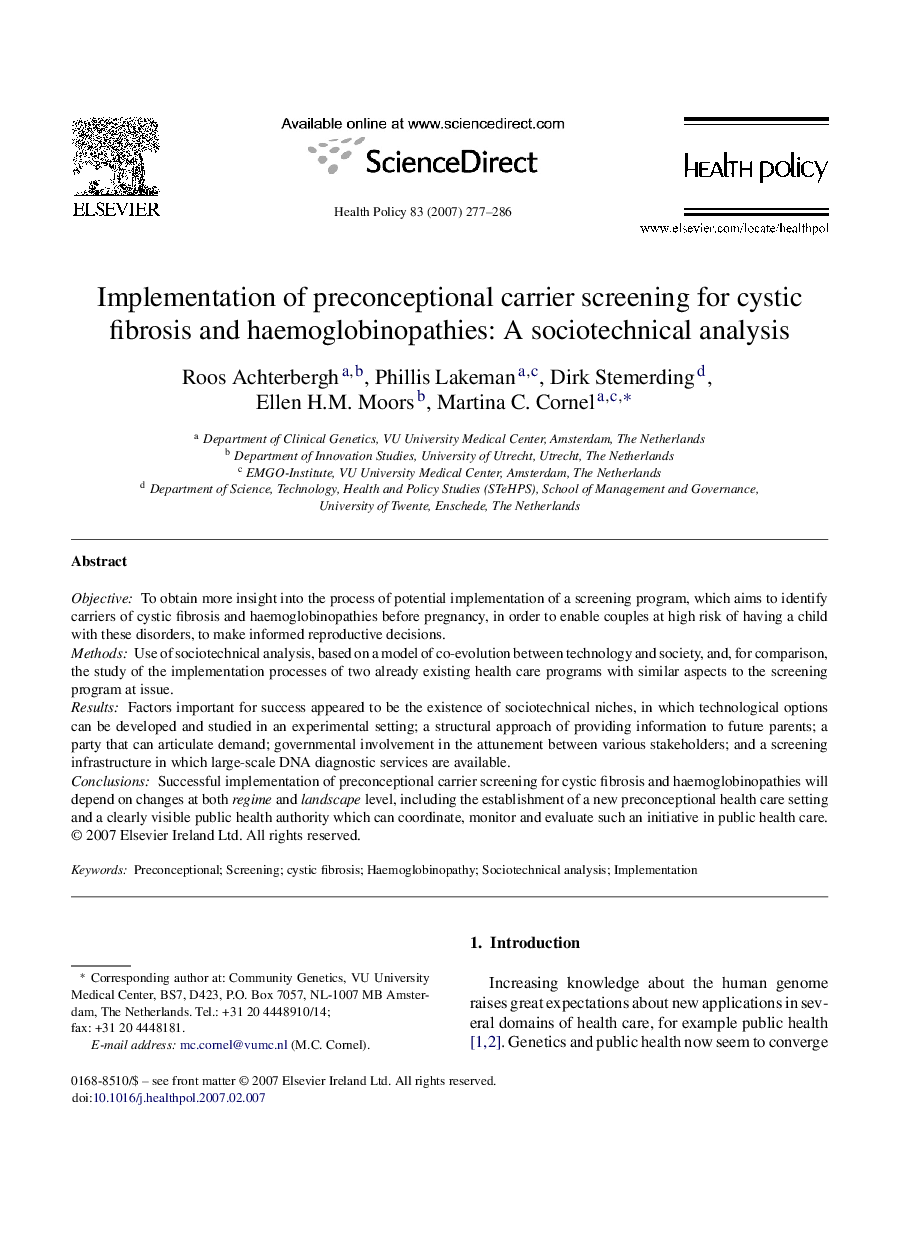| Article ID | Journal | Published Year | Pages | File Type |
|---|---|---|---|---|
| 4198950 | Health Policy | 2007 | 10 Pages |
ObjectiveTo obtain more insight into the process of potential implementation of a screening program, which aims to identify carriers of cystic fibrosis and haemoglobinopathies before pregnancy, in order to enable couples at high risk of having a child with these disorders, to make informed reproductive decisions.MethodsUse of sociotechnical analysis, based on a model of co-evolution between technology and society, and, for comparison, the study of the implementation processes of two already existing health care programs with similar aspects to the screening program at issue.ResultsFactors important for success appeared to be the existence of sociotechnical niches, in which technological options can be developed and studied in an experimental setting; a structural approach of providing information to future parents; a party that can articulate demand; governmental involvement in the attunement between various stakeholders; and a screening infrastructure in which large-scale DNA diagnostic services are available.ConclusionsSuccessful implementation of preconceptional carrier screening for cystic fibrosis and haemoglobinopathies will depend on changes at both regime and landscape level, including the establishment of a new preconceptional health care setting and a clearly visible public health authority which can coordinate, monitor and evaluate such an initiative in public health care.
